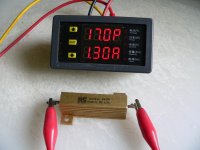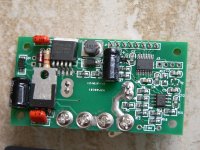It's awesome that it does 48V, I've seen plenty operating on only 12 or 24V.
The 20A will most likely already be with a shunt. Most 12/24V amp/watt meters require a shunt; basically a calibrated piece of metal, with a small resistance.
Say you have 100A of current,and use a shunt (piece of metal), the amp flow over the meter would be 1A, and 99A go through the shunt.
The meter will essentially be measuring 1A instead of 100. quite often they are off in decimals, or even in quarters of a number (depending on what shunt you install, it is for instance possible that 75A will go through the shunt, and 25A through the meter. In that case you'd have to multiply the value by 4, to read out the correct value).
But correct shunt values should be mentioned on the specs sheet of the device!
Too bad I don't like installing a shunt, it'd be way nicer for it to operate without, but on my ebike (48V, 20A), the bike can have upto a 40A powerdraw (700W motor). Too much for the meter to handle!
What voltage does it need for the LEDS?
Does it need a separate voltage (usually they need either a separate 12 or 5V supply for the leds)






